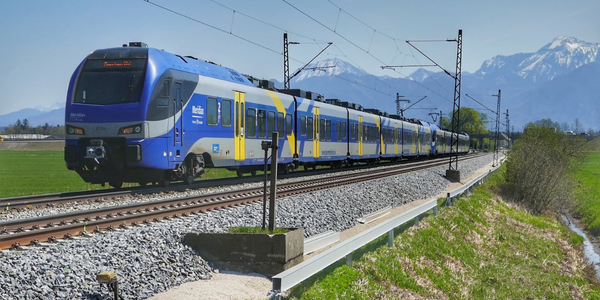下载PDF
Imperva Skyfence Enhances Office 365 Security for Metro Bank's Mobile Workforce
技术
- 平台即服务 (PaaS) - 设备管理平台
- 机器人 - 轮式机器人
适用行业
- 金融与保险
- 铁路与地铁
用例
- 行为与情绪追踪
- 供应链可见性(SCV)
服务
- 云规划/设计/实施服务
挑战
Metro Bank 是英国 100 多年来第一家新成立的商业银行,在通过启用对 Office 365 和 Yammer 的脱网访问来提高员工工作效率方面面临着重大挑战。尽管已经部署了 AirWatch 移动设备管理 (MDM),但该银行认为,由于保护银行和客户数据至关重要,此举风险太大。该银行希望限制对已通过 AirWatch MDM 部署进行管理的企业设备的离线访问,但没有直接的方法可以使用现有工具强制实施此策略。该银行的目标是为企业拥有的设备用户提供对 Office 365 的完全访问(无论是在网络上还是在网络外),并将对 Yammer 的访问扩展到个人设备用户。在第二阶段,特定同事将被授予异地访问 Dynamics CRM 中更敏感信息的权限。
关于客户
Metro Bank 是英国 100 多年来第一家新建的高街银行。 Metro Bank 于 2010 年 7 月开业,目前在伦敦和东南部拥有 27 家门店,并计划到 2020 年开设到 200 家。Metro Bank 以客户为中心,为客户提供无与伦比的服务和便利。该银行是 IT 领域的创新者,重点是使其英国各地的 1400 名同事能够有效地沟通和协作。 Metro Bank 将最新的 Microsoft 软件和服务投入使用,包括用于电子邮件、办公生产力和业务应用程序的完整 Office 365 套件、Dynamics CRM 和 Yammer。 Metro Bank 使用 AirWatch 移动设备管理 (MDM) 管理其 500 部企业 Windows 和 Apple 手机。
解决方案
Metro Bank 在伦敦举行的信息安全会议上介绍了 Skyfence 云网关,并看到了解决 Office 365 访问控制和安全挑战的潜力。该银行将 Skyfence 部署为基于云的内联代理,不需要任何本地硬件或软件。该团队为 Office 365 定义了一项策略,仅限制对托管企业笔记本电脑和 Windows 移动设备的访问。决定采用自助注册,使用户能够在第一次访问 Office 365 时注册远程云访问。通过利用 AirWatch 向选定设备发送证书的功能,Skyfence 能够自动确定哪些用户有资格注册完整的 Office 365 访问以及哪些用户和设备只能访问 Yammer。 Metro Bank 实施了完整的 Skyfence 云网关,以提供云应用程序使用情况的可见性,包括访问了哪些数据、何时以及由谁访问。他们还使用 Skyfence 云网关的安全和保护功能来检测应用程序使用中的行为异常,并实时警报或阻止可疑事件。
运营影响
数量效益
相关案例.

Case Study
Real-time In-vehicle Monitoring
The telematic solution provides this vital premium-adjusting information. The solution also helps detect and deter vehicle or trailer theft – as soon as a theft occurs, monitoring personnel can alert the appropriate authorities, providing an exact location.“With more and more insurance companies and major fleet operators interested in monitoring driver behaviour on the grounds of road safety, efficient logistics and costs, the market for this type of device and associated e-business services is growing rapidly within Italy and the rest of Europe,” says Franco.“The insurance companies are especially interested in the pay-per-use and pay-as-you-drive applications while other organisations employ the technology for road user charging.”“One million vehicles in Italy currently carry such devices and forecasts indicate that the European market will increase tenfold by 2014.However, for our technology to work effectively, we needed a highly reliable wireless data network to carry the information between the vehicles and monitoring stations.”

Case Study
Building Smart IoT-Connected Railways
• Difficult environment. Communications equipment on trains must function properly in harsh conditions, such as environment temperatures ranging from -25°C to +85°C, according to the EU standard EN50155.• Railway regulations. All products in a train must adhere to strict standards, relating to working vibration, power consumption, and lifetime.• Lengthy process. Time to market in the railway industry can take years from concept to mass production, so product design requires a solid long term vision.

Case Study
Safety First with Folksam
The competitiveness of the car insurance market is driving UBI growth as a means for insurance companies to differentiate their customer propositions as well as improving operational efficiency. An insurance model - usage-based insurance ("UBI") - offers possibilities for insurers to do more efficient market segmentation and accurate risk assessment and pricing. Insurers require an IoT solution for the purpose of data collection and performance analysis

Case Study
Connected Transportation: A Smarter Brain for Your Train with Intel
A modern locomotive, for example, has as many as 200 sensors generating more than a billion data points per second. Vibration sensors surround critical components, video cameras scan the track and cab, while other sensors monitor RPM, power, temperature, the fuel mix, exhaust characteristics, and more.Most of today’s locomotives lack sufficient on-board processing power to make full use of all this data. To make matters worse, the data from different subsystems, such as the brakes, fuel system, and engine, remain separate, stored in isolated “boxes” that prevent unified analysis. The data is available, but the technology needed to process it in the most effective manner is not. As new sensors are added to the machine, the problem escalates.

Case Study
Smooth Transition to Energy Savings
The building was equipped with four end-of-life Trane water cooled chillers, located in the basement. Johnson Controls installed four York water cooled centrifugal chillers with unit mounted variable speed drives and a total installed cooling capacity of 6,8 MW. Each chiller has a capacity of 1,6 MW (variable to 1.9MW depending upon condenser water temperatures). Johnson Controls needed to design the equipment in such way that it would fit the dimensional constraints of the existing plant area and plant access route but also the specific performance requirements of the client. Morgan Stanley required the chiller plant to match the building load profile, turn down to match the low load requirement when needed and provide an improvement in the Energy Efficiency Ratio across the entire operating range. Other requirements were a reduction in the chiller noise level to improve the working environment in the plant room and a wide operating envelope coupled with intelligent controls to allow possible variation in both flow rate and temperature. The latter was needed to leverage increased capacity from a reduced number of machines during the different installation phases and allow future enhancement to a variable primary flow system.

Case Study
Automated Pallet Labeling Solution for SPR Packaging
SPR Packaging, an American supplier of packaging solutions, was in search of an automated pallet labeling solution that could meet their immediate and future needs. They aimed to equip their lines with automatic printer applicators, but also required a solution that could interface with their accounting software. The challenge was to find a system that could read a 2D code on pallets at the stretch wrapper, track the pallet, and flag any pallets with unread barcodes for inspection. The pallets could be single or double stacked, and the system needed to be able to differentiate between the two. SPR Packaging sought a system integrator with extensive experience in advanced printing and tracking solutions to provide a complete traceability system.





